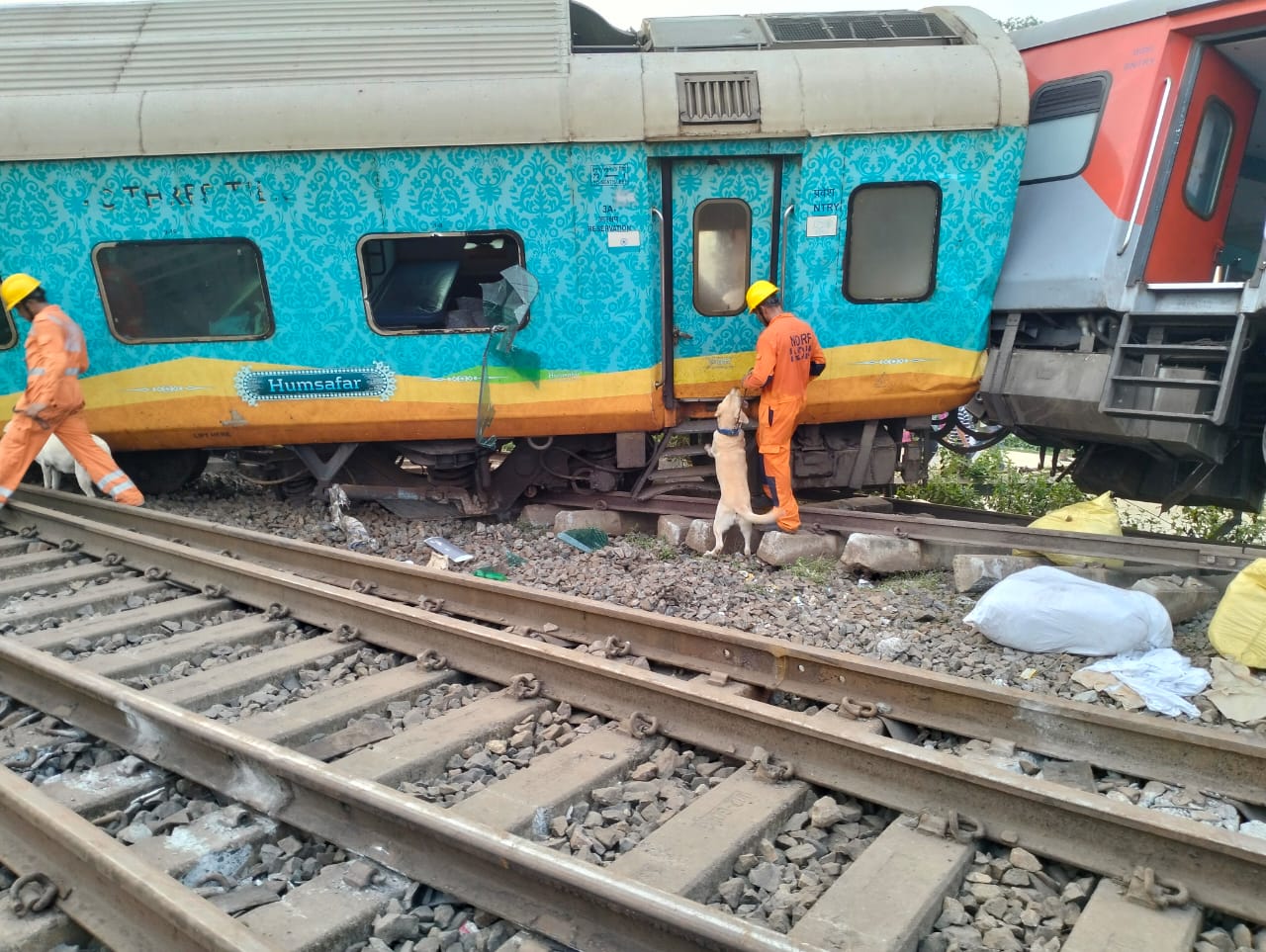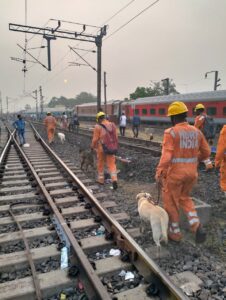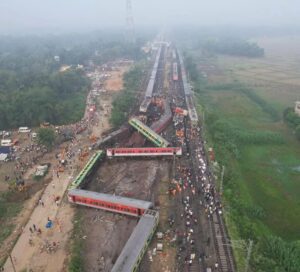The ghastly accident involving two passenger trains and a good train in the Balasore district of Odisha killed at least 288 people.

Train accident in Balasore in Odisha
The engine change at the Visakhapatnam Junction of the Yeshwantpura-Howrah Superfast Express on the evening of Friday, 2 June, probably saved the lives of 110 Jain pilgrims travelling from Karnataka to Shikharji in Jharkhand.
The pilgrims were on their way to Sammed Shikharji on Parasnath Mountain, one of the holiest pilgrimage places for Jains, and to attend a sermon of Muni Shree Sagar Ji Maharaj.
They appeared to have a providential escape from what turned out to be a three-trained accident that resulted in the death of at least 288 people.
“We all were reserved passengers in the S7, S6, and S5 compartments. Some of us were in S3, too,” Santhosh MS, one of the Jain pilgrims and a passenger of the Yeshwantpura-Howrah Superfast, told South First.
“S6 and S7 were the last two compartments of the Yeshwantpura-Howrah Superfast Express until Visakhapatnam junction,” he added.
“On Friday evening, after the engine was changed at Visakhapatnam, the S7 compartment turned out to be the first compartment after the engine, as we realised that the train was heading backwards,” said Santhosh.
The first two compartments — the General ones — had now become the last two of the train headed for Kolkata, he added.
As the Yeshwanthpura-Howrah express was already late by four hours, the Jain pilgrims were nervously checking the time: They had to catch a connecting train from Howrah, headed towards Mumbai.
The 110 Jain pilgrims started their journey on 31 May in two buses from Horanadu, Kalasa, Samse, and Kudremukh in the Chikkamagaluru district in Karnataka. They reached Bengaluru on 1 June.
One Ajit Kumar hosted them at a hotel in Bengaluru for freshening up and breakfast on Thursday morning, after which they boarded the Yeshwantpura-Howrah Express from the Baiyappanahalli railway station.

Train accident in Balasore in Odisha
Sudeep Jain, a passenger of the S5 compartment, clearly remembered what happened around 6.45-7 pm on 2 June when their train approached the Bahanaga railway station in the Balasore district of Odisha.
“It was a sudden braking and our train came to a screeching halt. Passengers who were sleeping were suddenly awake. We were told that there was some technical issue, but the train did not move even after 15-20 minutes. We could see passengers getting out of the train and walking towards the back,” Santhosh told South First.
Santhosh, Sudeep, and a few of their accomplices also got down and started walking towards the back of the train.
“At first, we saw three bodies lying near the tracks, and then it was a mayhem,” Santhosh recalled.
“We were told that the Chennai-Coramandal Express had come in at a high speed and, after colliding with a parked goods train, again hit the last two bogies of the Yeshwantpura-Howrah Express — our train. It was only at 8.15 pm that we realised that it was a major train accident, and that we were all stranded,” Santhosh told South First.
They saw nearby villagers rushing to the spot with ladders and starting to climb into the compartments to rescue the injured passengers from the derailed compartments, they said.
People had to carry corpses and the injured for about half a kilometre to reach the ambulances with blaring sirens.

Train accident in Balasore in Odisha
“The last two General bogies of the Yeshwantpura-Howrah Superfast Express were hit by the Chennai-Coramandal Express. The right side of all compartments of the Chennai Express was twisted. Our compartment had passed through to the front by about one-two kilometres,” said Santhosh.
The maximum number of casualties was from the Chennai-Coramandal express, he added.
“We took a headcount of all our people and found that we were all safe. We waited until Saturday morning, after which we all reached Kolkata,” Santhosh said.
“We can’t imagine, talking to you like this if our bogies were the last ones of the Yeshwantpura-Howrah Express,” Sudeep told South First.

Apr 25, 2024

Apr 25, 2024

Apr 25, 2024

Apr 25, 2024

Apr 25, 2024

Apr 25, 2024